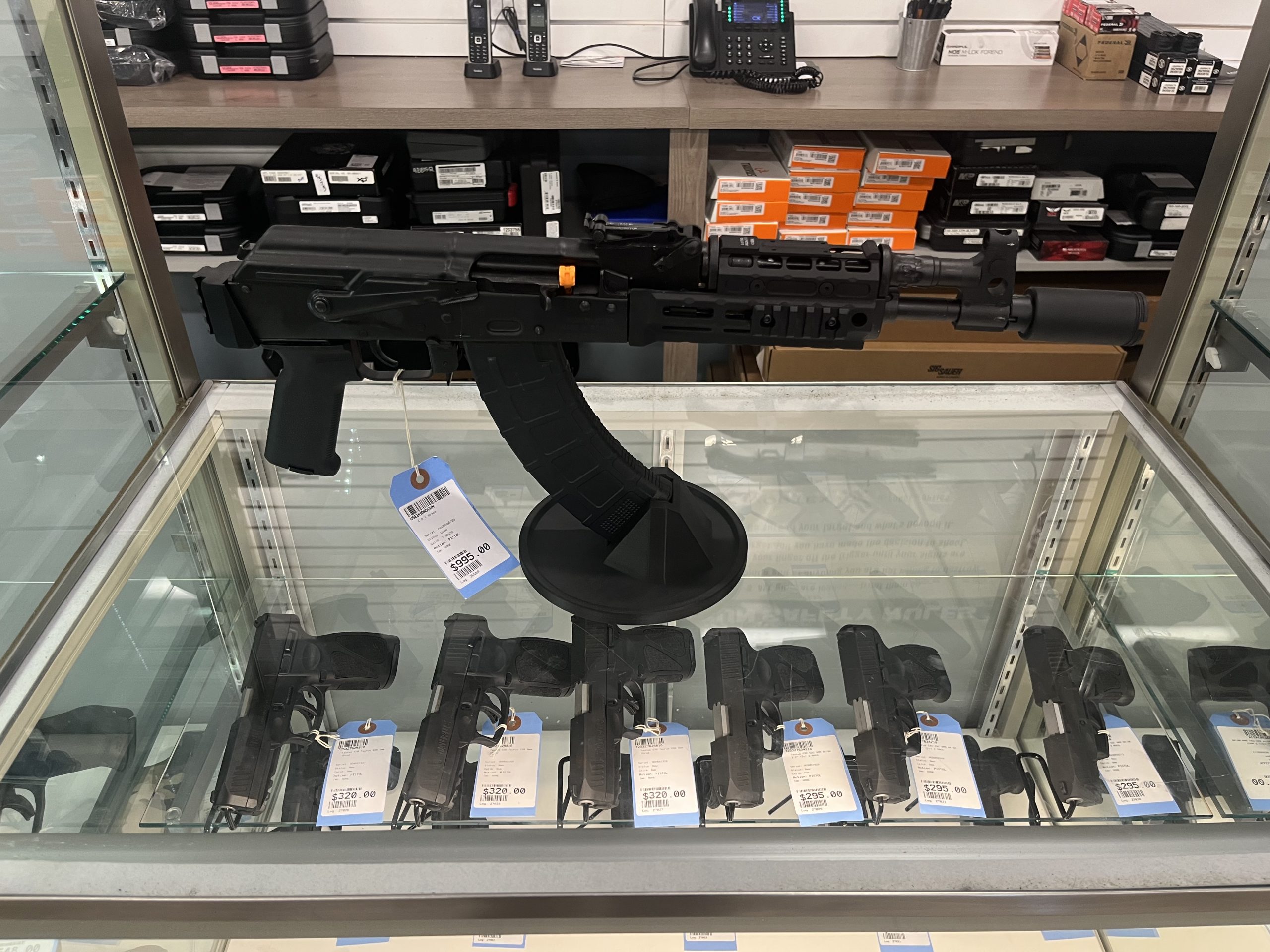
Categories:
The AK-47, an iconic and historically significant assault rifle, is renowned for its reliability, durability, and simplicity. Among its many components, the muzzle barrel’s front end, where the bullet ultimately exits, plays a crucial role in its performance and effectiveness. This seemingly small part of the gun is engineered with precision and designed to withstand the high pressures and temperatures generated during firing.
Understanding the significance and functionality of the muzzle barrel’s front end provides insights into the meticulous engineering that makes the AK-47 a weapon of choice for militaries, rebels, and enthusiasts around the world. The front end of the muzzle barrel is the last point of contact between the gun and the bullet, so its design significantly impacts the trajectory and accuracy of the projectile.
At this juncture, gases that propel the bullet forward must be expertly managed. The AK-47’s muzzle device, often a slant compensator or muzzle brake, is engineered to vent these gases strategically, reducing recoil and muzzle climb, which are critical factors during rapid-firing sequences. This clever use of gas redirection allows the shooter to maintain better control and accuracy during continuous fire, making the weapon more manageable even by less experienced operators.
In addition to enhancing shooting accuracy and recoil management, the muzzle barrel’s front end also serves protective and preservative functions. It shields the internal rifling of the barrel, ensuring longevity and sustained barrel integrity. Furthermore, the robust construction of the AK-47’s muzzle is specifically designed to endure extended periods of use and environmental strain, such as battlefield conditions that include dirt, moisture, and corrosion.
This design resilience ensures that the gun remains operational over prolonged periods without requiring extensive maintenance. The muzzle’s front end is also adaptable, capable of fitting various attachments that can alter the rifle’s capabilities. From flash suppressors to sound suppressors, these modifications allow the user to customize the weapon for different operational needs without compromising the foundational design that ensures reliability.
This adaptability is a testament to the AK-47’s design foresight, enabling a single rifle model to serve multiple roles across different contexts.
The AK-47, a renowned and highly effective assault rifle developed by Mikhail Kalashnikov in the mid-20th century, features a complex and precisely engineered muzzle assembly. The muzzle, specifically the barrel’s front end where the bullet exits, incorporates several critical components that collectively contribute to the weapon’s reliable performance, accuracy, and overall functionality. At the core of the muzzle system is the barrel crown.
This crucial part is the very end of the barrel where the bullet exits. Maintaining a perfectly smooth and undamaged barrel crown is essential, as any imperfections can disrupt the bullet’s flight path, significantly affecting accuracy. The consistency and precision of the barrel crown directly influence the stability of the bullet as it leaves the barrel, ensuring optimal performance. Attached to the muzzle is the front sight post, a component vital for aiming the rifle.
This post works in conjunction with the rear sight to help the shooter align the weapon accurately toward the target. The front sight assembly is typically adjustable, allowing fine-tuning to account for factors such as windage and elevation, which can affect shooting precision. Most AK-47 muzzles also feature a muzzle brake or compensator. This device, typically attached by threading onto the muzzle, plays a significant role in reducing recoil and muzzle rise during firing.
By directing the expanding gases expelled from the barrel in specific directions, the muzzle brake helps to counteract the rifle’s upward climb, enabling the shooter to maintain better control and achieve faster follow-up shots. Another essential aspect of the muzzle is its threading. The threaded portion of the muzzle allows for the attachment of various muzzle devices, such as flash suppressors, which help to minimize the visible flash caused by the ignition of gunpowder.
Reducing the flash is particularly useful in low-light conditions, as it prevents the shooter from being blinded by the bright light and helps conceal their position from adversaries. In summary, the muzzle of the AK-47 encompasses several key components, each playing a vital role in the rifle’s overall performance.
The design and function of the muzzle brake on the AK-47 play crucial roles in the rifle’s performance and manageability. The muzzle brake is a device attached to the muzzle end of the barrel, engineered to manage recoil and muzzle rise when the gun is discharged. When a bullet is fired from the AK-47, explosive gases propel the projectile forward, generating significant recoil and upward force that can affect the shooter’s accuracy.
The muzzle brake mitigates these forces, enhancing stability and control.
The AK-47’s muzzle brake showcases a sophisticated design, typically featuring a series of carefully placed ports or openings. These ports are angled in such a way as to direct some of the propellant gases expelled behind the bullet outward and upward. By redirecting the gases, the muzzle brake generates counteracting forces that significantly reduce the weapon’s rearward thrust and the tendency of the muzzle to rise.
This redirection of gases stabilizes the rifle and helps the shooter maintain a steady aim, especially during rapid-fire sequences.
Moreover, the muzzle brake serves to distribute the recoil forces more evenly. Without a muzzle brake, the recoil energy would be concentrated and transmitted directly into the shooter’s shoulder, potentially leading to discomfort and fatigue over extended periods of firing. By diffusing these forces, the muzzle brake not only reduces the shooter’s perceived recoil but also enables quicker re-acquisition of the target between shots.
The effectiveness of a muzzle brake can vary depending on its design and the specific dynamics of the gun. In the case of the AK-47, the standard slant-cut muzzle brake is particularly effective in managing the pronounced recoil of 7.62×39mm ammunition. Its simple but robust construction ensures durability and reliability under diverse operating conditions, further solidifying the AK-47’s reputation for ruggedness.
In conclusion, the muzzle brake on the AK-47 represents a critical component in enhancing the rifle’s performance. By mitigating recoil and muzzle rise, it improves accuracy and shooter comfort, making the AK-47 more efficient and easier to handle during both consecutive and single shots. Its design exemplifies the blend of simplicity and functionality that characterizes the AK-47 as a whole.
The muzzle of an AK-47, like that of any gun, plays a crucial role in influencing the trajectory of the bullet as it exits the barrel. This small but significant component impacts the bullet’s path through various mechanisms including gas dispersion, pressure release, and barrel harmonics. Understanding these factors can help in comprehending how crucial the muzzle is in determining both the accuracy and precision of the shot.
Firstly, the muzzle’s design plays a pivotal role in the dispersion of gases upon the bullet’s exit. The combustion gases generated from the gunpowder’s ignition are released at high velocity and pressure behind the bullet. If not properly channeled, these gases can destabilize the bullet, causing deviations from the intended path. Modern AK-47 models often incorporate muzzle devices such as compensators or flash suppressors that help manage the gas release.
Compensators, for example, redirect these gases in a manner that helps counteract the recoil and muzzle rise, keeping the barrel relatively stable and aligned with the target. Another factor is the pressure differential as the bullet exits the muzzle. The rapid shift from high-pressure environment within the barrel to the lower pressure of the external atmosphere can create turbulence that impacts the bullet’s stability.
Muzzle brakes are designed to mitigate this by reducing the sudden pressure drop, ensuring a smoother transition for the bullet. This smoother transition minimizes the risk of turbulence-induced deviations, aiding in maintaining a consistent trajectory. Barrel harmonics, the vibrations and oscillations that occur during the firing process, also play a significant role in bullet trajectory. The muzzle end is the last point of contact between the barrel and the bullet, making it critical in how these vibrations settle when the bullet exits.
Any imperfections or asymmetries at the muzzle can exacerbate these vibrations and cause minute yet significant shifts in the bullet’s path. Ensuring that the muzzle and barrel are meticulously machined and aligned helps in maintaining consistent harmonics, thus enhancing the bullet’s accuracy. In conclusion, the muzzle of an AK-47 is integral to the bullet’s trajectory, influencing it through gas dispersion, pressure management, and barrel harmonics.
Maintaining and caring for the muzzle barrel of your AK-47, particularly the front end where the bullet exits, is crucial to ensuring the longevity and performance of your gun. As this part of the barrel is exposed to extreme pressures and temperatures each time a round is fired, regular cleaning and inspection are essential.
Begin by unloading the gun and ensuring it is completely clear of ammunition. Safety should always be your first priority. Disassemble the gun according to the manufacturer’s instructions, removing the bolt carrier and other critical components to gain clear access to the barrel.
To clean the muzzle end, use an appropriately sized cleaning rod with a bore brush attached. Pass the brush through the barrel from the chamber end toward the muzzle end, as this ensures that any debris is pushed out, rather than lodged further into the barrel. Use a high-quality, solvent-soaked patch to break down any fouling or carbon build-up. Run it through multiple times until the patches come out clean.
Next, use a dry patch to remove any remaining solvent. It’s essential to ensure no residue is left in the barrel, as this could alter the bullet’s trajectory or even cause dangerous malfunctions. Once the barrel is dry, pass through a lightly oiled patch to create a protective layer that will prevent rust and corrosion.
Visual inspection is crucial in maintaining the muzzle barrel. Inspect the muzzle for signs of wear, pitting, or damage. Particular attention should be given to the crown, the very tip of the muzzle, as any damage here can affect bullet accuracy. If you find any imperfections or damage, it should be assessed by a professional gunsmith.
Finally, ensure the area around the muzzle is free from obstructions and debris before reassembling the gun. Maintaining the muzzle barrel diligently will not only keep your AK-47 functioning reliably but will also preserve its accuracy and effectiveness for years to come. Regular maintenance after each use and routine checks between uses are the keys to a well-functioning, safe gun.
The muzzle barrel of an AK-47 is a crucial component, responsible for guiding the bullet’s trajectory as it exits the gun. Despite its robust design, several common issues can affect the performance and accuracy of the weapon. Addressing these problems through proper troubleshooting is essential for maintaining the gun’s reliability.
One common issue with the muzzle barrel is the accumulation of carbon deposits and fouling, which can occur due to prolonged shooting sessions. These deposits can affect the smoothness of bullet travel and impair accuracy. Regular and thorough cleaning of the muzzle barrel is necessary to prevent buildup. Solvent-based cleaners and brass brushes are effective at removing these deposits.
Corrosion and rusting can also severely affect the muzzle barrel, especially in humid or wet environments. Stainless steel barrels are less susceptible, but regular application of rust-preventative oils and proper storage in dry conditions are critical steps to protect the metal. Inspect the muzzle for any signs of rust and clean it immediately to prevent further damage.
Another issue could be damage to the crown of the barrel, the very end where the bullet exits. This can happen due to improper cleaning techniques, accidental drops, or impact with hard surfaces. A damaged crown can deflect the bullet slightly as it exits, degrading accuracy significantly. Inspect the crown regularly and consider seeking professional help for recrowning if any damage is evident.
Threaded muzzles, often used to attach accessories like muzzle brakes or flash suppressors, can occasionally loosen. This can lead to misalignment, affecting both accuracy and safety. Always ensure that threaded accessories are properly tightened and aligned. Use thread-locking compounds if necessary, but make sure they are compatible with gun use.
Lastly, checking for alignment issues is crucial. An improperly aligned muzzle can cause bullets to strip or deform, resulting in inaccurate shots. Alignment tools are available to check this aspect and can be used to ensure that the barrel and accessories are perfectly aligned.
By addressing these common issues through diligent maintenance and inspection, the performance and accuracy of the AK-47’s muzzle barrel can be kept in optimal condition, ensuring the gun operates reliably when needed.
Enhancements and upgrades for the AK47 muzzle have evolved significantly over the years, driven by the need to improve accuracy, reduce recoil, and minimize muzzle rise. One of the primary enhancements is the adoption of advanced muzzle devices. These devices, which include muzzle brakes, compensators, and flash suppressors, are designed to optimize the rifle’s performance in diverse shooting environments. Muzzle brakes are particularly popular for their ability to redirect gases expelled from the barrel to counteract recoil, thus allowing for faster follow-up shots and improved shot grouping.
Compensators, on the other hand, are engineered to mitigate muzzle rise by venting gases upwards, which stabilizes the rifle and helps maintain a consistent line of sight during rapid fire. Flash suppressors are another crucial upgrade that has gained traction among both military and civilian users. These devices reduce the visible signature of the rifle when fired, thereby enhancing the shooter’s concealment and reducing the chances of being detected by adversaries.
Another innovative enhancement is the hybrid muzzle device, which combines the functionalities of a muzzle brake, compensator, and flash suppressor into a single unit, offering a versatile solution that caters to various shooting requirements without the need to constantly swap out different devices. Modern manufacturing techniques and high-quality materials have also contributed to the effectiveness of these muzzle upgrades. The use of heat-resistant alloys and precision machining ensures that the devices are durable and can withstand prolonged usage under harsh conditions without degrading performance.
The advancements in attachment mechanisms, such as quick-detach systems, have simplified the process of installing and removing these devices, making it easier for users to customize their rifles according to their specific needs. Additionally, aftermarket accessories such as thread protectors and suppressors have further expanded the customization possibilities for the AK47 muzzle. Thread protectors guard the barrel threads when no muzzle device is attached, preventing damage and ensuring long-term compatibility with various devices.
Suppressors, or silencers, although regulated, offer the advantage of reducing the sound signature and recoil, making shooting more comfortable and less disruptive, particularly in tactical or hunting scenarios.
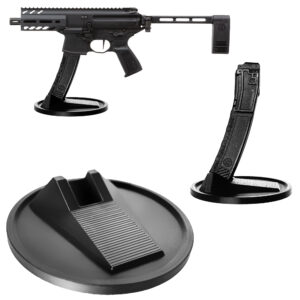
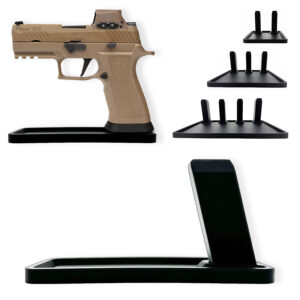
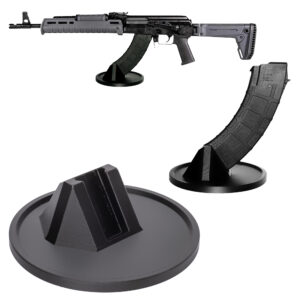


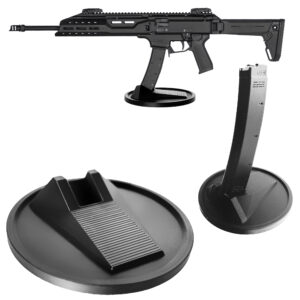
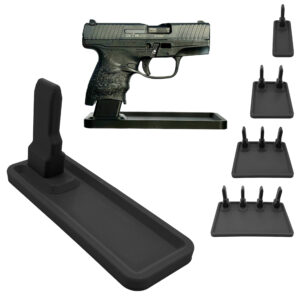

Colt
Colt M4 Carbine
Colt LE6920
Colt AR-15 A4
Daniel Defense
DDM4 V7
DDM4 V9
DDM4 V11
DDM4 ISR (Integrally Suppressed Rifle)
Smith & Wesson (S&W)
M&P15 Sport II
M&P15 Tactical
M&P15T
Bravo Company Manufacturing (BCM)
BCM Recce-16
BCM Recce-14
BCM MCMR Series
Aero Precision
M4E1 Series
AC-15
AR15 Pistol (Various Configurations)
Ruger
Ruger AR-556
Ruger SR-556
Ruger AR-556 MPR (Multi-Purpose Rifle)
Springfield Armory
Saint Victor
Saint Edge
Saint AR-15
PSA (Palmetto State Armory)
PSA PA-15
PSA AR-V
PSA Jakl (AR Pistol)
FN America
FN 15 Tactical Carbine
FN 15 Patrol
FN 15 DMR
Wilson Combat
Recon Tactical
Super Sniper
Protector Carbine
SIG Sauer
SIG M400 Tread
SIG M400 Elite
SIG M400 SDI
LWRC International
IC DI (Direct Impingement)
IC SPR
IC A5
Bushmaster Guns
XM-15 QRC
Bushmaster MOE
XM-15 Patrolman
Rock River Arms
LAR-15 Entry Tactical
LAR-15 Predator
LAR-15 Elite Comp
Stag Arms
Stag 15 Tactical
Stag 15L (Left-Handed Models)
Stag 15 Valkyrie
Noveske Rifleworks
Noveske Gen 4 N4
Noveske Space Invader (AR Pistol)
Noveske Recon
Anderson Manufacturing
AM-15 Optic Ready
AM-15 M4 Carbine
AM-15 Precision Rifle
Adams Arms
AA-15 Piston Rifle
P2 AARS (Adams Arms Rifle Series)
Black Rain Ordnance
SPEC15 Series
BRO Predator
Fallout 15
Diamondback Guns
DB15 Series
DB15CCMLB
DB15EB
Del-Ton Inc.
DTI-15
Del-Ton Echo 316H
Sierra 316M
Windham Weaponry
Windham SRC
Windham VEX-SS
Windham RMCS-4 (Caliber Conversion System)
Christensen Arms
CA-15 G2
CA-15 Recon
CA-15 Titanium Edition
Patriot Ordnance Factory (POF-USA)
Renegade Plus
P415 Edge
Revolution DI
LaRue Tactical
PredatAR
OBR (Optimized Battle Rifle)
LaRue Stealth 2.0
Battle Arms Development
Workhorse Patrol Carbine
BAD556-LW (Lightweight)
Authority Elite Rifle
Faxon Guns
Ascent AR-15
FX-19 (AR Pistol)
Streamline Ultralight Series
KE Arms
KE-15 SLT (Super Lightweight Tactical)
KE-15 Scout Carbine
Primary Weapons Systems (PWS)
MK1 MOD 2-M
MK116 PRO
MK107 (Piston AR Pistol)
ZEV Technologies
ZEV Core Elite Rifle
ZEV AR15 Billet Rifles
Franklin Armory
BFSIII AR-C1
Militia Model
F17-L (Chambered in .17 WSM)
Seekins Precision
SP15 DMR
NX15 Skeletonized Rifle
Havak Bravo
Aero Precision (Additional Models)
EPC-9 (Pistol Caliber ARs)
VG6 AR Rifles
Barrett Guns
REC7 DI
REC7 Gen II
CMMG
MK4 RCE
Resolute 300
Banshee (AR Pistol)
DPMS Panther Arms
Panther Oracle
Panther LR-308
H&K (Heckler & Koch)
HK MR556A1
HK416 (Military Variant)
Rock Island Armory (Armscor)
VR-80 Tactical AR (Shotgun AR Platform)
Troy Industries
Troy SPC-A3
Troy PAR (Pump Action AR)
Wilson Tactical
Tactical Recon AR
Protector Series
F1 Guns
FDR-15 Skeletonized Rifle
BDRx-15 Series
Juggernaut Tactical
JT-15
JT-10 Precision Rifle
AeroSurplus
Surplus AR-15 Rifles (Budget Models)
Thunder Tactical
AR-15 Basic Carbine
Tactical Builder Sets
Radical Guns
RF-15
Forged AR-Series
Dark Storm Industries
DS-15 Featureless Rifles
DS-10 Typhoon
DRD Tactical
Paratus
Aptus AR Rifles
Bear Creek Arsenal
BCA-15
AR Complete Upper Builds
Aero Survival Rifles (ASI)
ASR Tactical Series
Tactical Edge
WARFIGHTER Series
AR-15 Lightweight Rifles
Lone Star Armory
TX15 DMR
TX15 Carbine
HERA Arms
HERA H7
HERA AR-15 Lower Builds
IWI (Israeli Weapon Industries)
Zion-15
DRD Tactical
Tactical Modular Rifles
Quick-Takedown Rifles
V Seven Weapons
1776 Rifle
Hyperlite Rifle
Core Rifle Systems
Core15 Tac III
Core15 Patrol Rifle
Armalite (Original AR-15 Creator)
M15 Tactical
M15 A4 Carbine
DEF15 (Defensive Sporting Rifle Series)
PSA (Palmetto State Armory Additional Models)
PSAK-47 Hybrid (AR-AK Style Hybrid)
PSA Dagger (Pistol Caliber Configurations)
Odin Works
OTR-15
Odin Recon Rifle
Maxim Defense
MDX-508 PDX (Compact AR Pistol)
MDX-510 Rifle